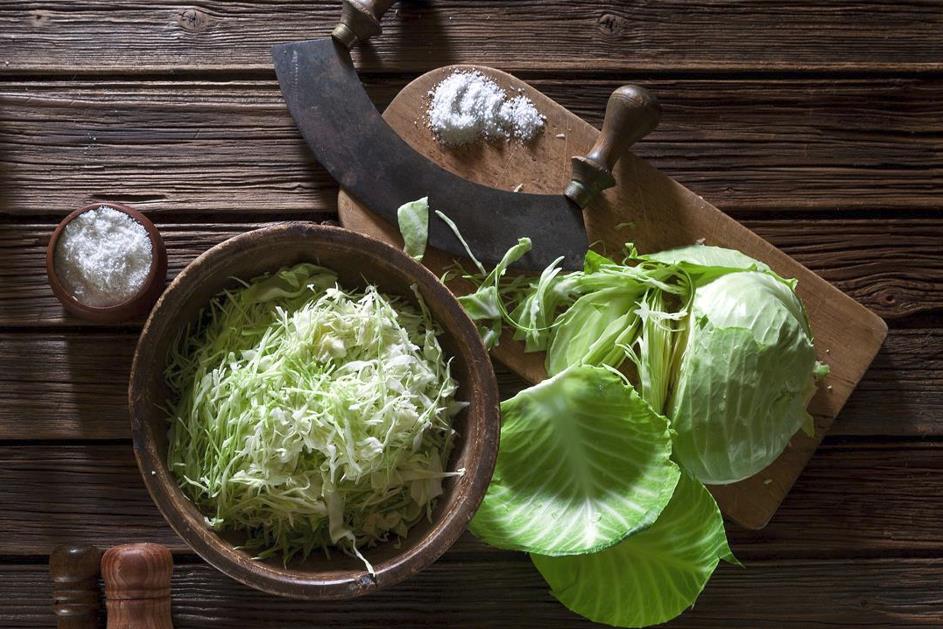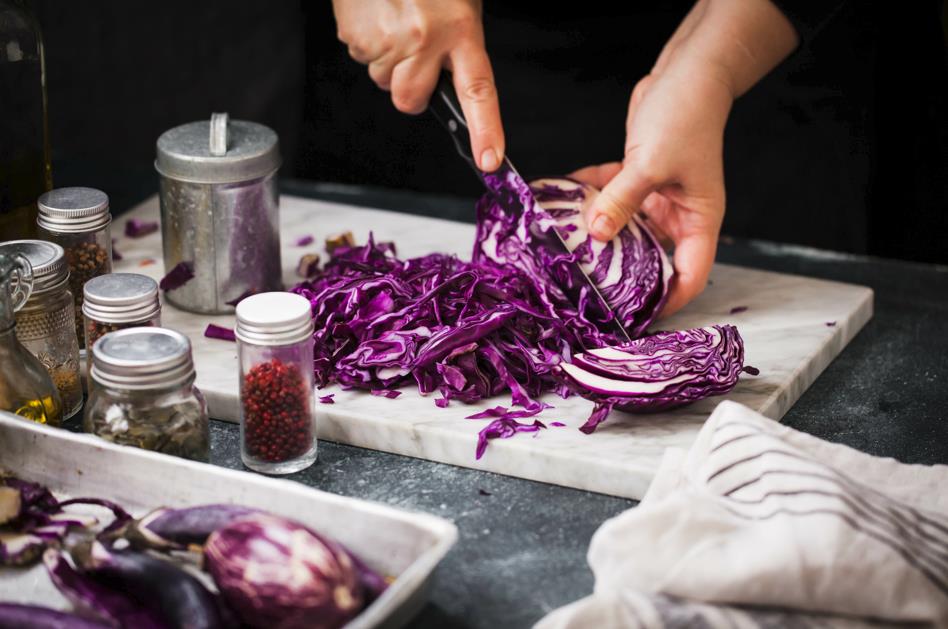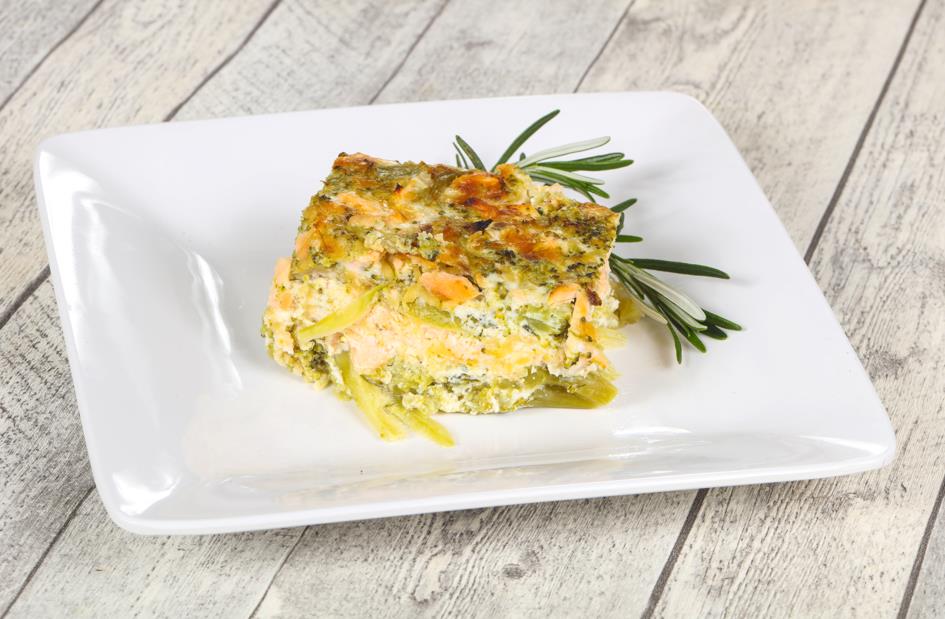Cabbage is a sadly underused vegetable in Western kitchens and this article aims to fix that. The Slavic peoples use cabbage on the daily and in many different and exciting ways, it’s a vegetable full of not only goodness but versatility too! They’re really onto something with cabbage and we’re going to show you how to get the best out of it in your home kitchen.
Let’s explore buying high quality cabbages; cutting and preparing them; what they do for our health and fit in some super useful FAQs just to round things off nicely!
Table of contents
Getting the best quality cabbage – our buying tips
The most common varieties of cabbage you’ll find in your local grocery store are white, purple, and green cabbage. They’re just jewels of leafy color! They’re all the same plant (brassica), all relatively low in price, and all very tasty and good for you. When buying high-quality cabbage, consider the following tips:
First, purchase cabbage in season, from September to February. Look for bright-colored leaves, a firm and dense texture, and a heavy feel. Opt for tightly wrapped leaves, avoiding loose or floppy ones. Remember that larger cabbages have a milder flavor, while smaller ones have a stronger taste. Check for leaf discoloration, moldy spots, and crisp edges. Lastly, inquire about whether the supplier has encountered a frost. These tips will help you select the best cabbage available.
Cutting cabbage – how to
Cutting cabbage for use in your salads or dishes is a doddle – it’s an obliging veg that lends itself to slicing and dicing, so let’s get out our very sharp chef’s knife, our sturdy chopping board, and get stuck in!
Chiffonade cut – very fine strips

You’ll use this cutting technique a lot for stir fries and coleslaw – here’s how:
- Firstly, rinse your whole cabbage under slow running cold water.
- Next, remove the outer layer of leaves if these are wilted or unpleasant looking. If they are fresh and crisp, leave them on the cabbage.
- Holding the cabbage firmly on its side on your chopping board, slice off the stem end, about an inch, and discard or save for your compost heap.
- Cutting off the stem end will give you a flattish surface, balance the cabbage on that end so that it’s steady.
- Now cut through the middle of the cabbage with your chef’s knife, one clean and hard cut downwards. Now you have two halves of cabbage.
- With the tip and front end of your chef’s knife, excise the tough core section at the middle of each cabbage half without cutting into the leaf area you want to chiffonade.
- Place a half of the cabbage face/flat side down on your chopping board and hold it firmly in place with your non – chopping hand.
- Using your chef’s knife, start at one end of the halved cabbage round and cut down through the cabbage in very small increments, about ¼ inch apart. Continue cutting parallel in downward strokes very close to each other and work along until you’ve reached the end of the cabbage half and it’s all chopped.
- Move onto your second cabbage half and repeat that fine, very close chopping motion. You’ll be left with a large pile of finely shredded cabbage that the fancy types call ‘chiffonade of cabbage’!
Cutting cabbage into wedges
You’ll use this cutting technique when you roast cabbage or dress it for a wedge salad – here’s how:
- Rinse the whole cabbage, remove the outer leaves if tough, and remove the stem end (about 1 inch cut off).
- Place the cabbage on the now flattened stem end and cut it straight down the middle to give you two cabbage halves.
- Place a cabbage half face/flat side down on your chopping board, and cut vertically through its middle once, along it’s ‘longitude line’ if you can picture that. This quarters the cabbage. Cut out the inner ¼ inch of each wedge to remove any tough core matter.
- Now cut through the middle of each quarter again vertically, and this will result in wedges of cabbage – you should end up with eight wedges.
These wedges can now be dressed/oiled for either roasting or use in a salad.
Mincing cabbage

‘Mincing’ cabbage just means to cut it into teeny, tiny blocks. You’ll use this technique mainly for stuffing and fillings for things like dumplings, pierogi, soups, and meatballs – here’s how:
- Chiffonade your cabbage, following our method as outlined above.
- Now bring together a pile of the chiffonade with your fingers, keeping the strips running in the same direction, horizontally in front of you, or lengthways.
- Roll the strips of cabbage together with the tips of your fingers like a cigar and hold them tightly with your non – knife hand in that ‘tube’ shape.
- Next, cut downwards vertically from one end of the tube towards the other end in small increments, about 1/16th of an inch, and carry on until you’ve reached the end of the cabbage ‘tube’.
This will result in very small blocks of cabbage, or cabbage ‘mince’ that you can put into meatballs, dumpling filling or similar dishes.
Best knife to cut cabbages
True cutting power in the palm of your hand
Cabbage – your friend in healthy living
Cabbage is a nutritional powerhouse, offering a wide range of health benefits. It contains heart-protecting antioxidants such as beta-carotene and lutein, which help to boost antioxidant levels in the body. Additionally, its high fiber content promotes healthy digestion and clears the digestive tract.
Cabbage also aids in lowering cholesterol by binding with unhealthy acids in the stomach, preventing them from entering the bloodstream. Moreover, cabbage is rich in sulforaphane, a powerful cancer-fighting agent. Lastly, the presence of glutamine in cabbage contributes to reducing inflammation, making it beneficial for alleviating body aches, joint pain, and arthritis.
Our favorite cabbage recipes
Asian red cabbage slaw

This slaw is PACKED with nutrients for a powerful ‘pick me up’ dish that you can make ahead, and store sealed in the fridge. It’s dead easy to throw together and glistens with bright crunch and taste.
Cabbage casserole

This oozy, comforting pie is very much like a quiche and crammed with vegetables. It’s total ‘spoil yourself’ food for a cool night and even kids will enjoy getting their veg intake this way!
Cabbage FAQs
How do I store cabbage properly?
Where possible cabbage should be stored whole, in the crisper drawer of your refrigerator. As soon as you cut it, it will start to lose Vitamin C content, so better to keep it whole until you cook it. In the fridge, it’ll last a couple of weeks if it’s kept dry. You can also freeze cabbage, but the texture will be affected, it will lose crispness and crunch.
My cabbage is very tough and fibrous, how can I get it tender?
Shred/chiffonade it and cook it low (temperature) and slow (time) in a slow cooker/Dutch oven for a couple of hours. Add meat or other vegetables, aromatics and broth and you’ll have a tummy satisfying stew with little effort.
I’ve accidentally shoved my cabbage into the freezer and now it’s frozen. Now what?
All is not lost dear heart! One of the first steps to making cabbage rolls is to freeze the cabbage first to soften it. So, chin up, you’re now making cabbage rolls! Just let the leaves thaw completely, then proceed as the recipe directs. Alternatively, frozen cabbage is fine in things like soup where texture isn’t a big issue.
In conclusion
Cabbage is such a friend in the kitchen – it’s very cheap, totes good for you, and there are just masses of interesting recipes out there for using it. It’s a kitchen winner by any standard and we hope that this guide to cabbage and cutting it properly has shown you the way to leafy success.
Do join us again soon for further articles on our veg friends, explorations of other top ingredients and cutting techniques that’ll have you swinging your kitchen knives like a samurai!












